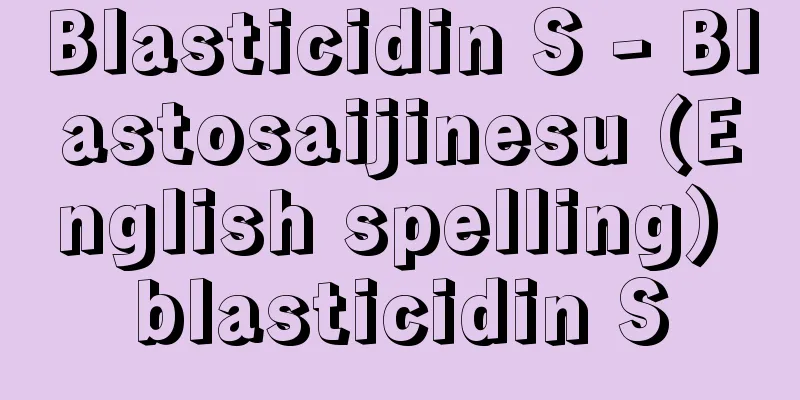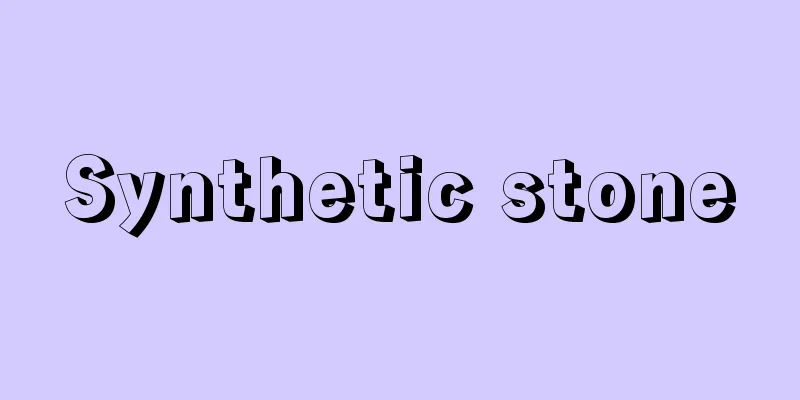Blasticidin S - Blastosaijinesu (English spelling) blasticidin S

|
It is the scientific name of the active ingredient of a fungicide used to control rice blast disease under the trade names Blaes Powder and Blaes Emulsion. It is an antifungal antibiotic that was developed and developed for agricultural purposes. It is a water-soluble basic substance isolated from the culture medium of Streptomyces griseochromogenes at the Institute of Applied Microbiology, University of Tokyo in 1955 (Showa 30). It is an aminoacylnucleoside antibiotic in which a sugar and an amino acid are bonded to the nucleic acid base cytosine. It appears as white needle-like crystals with a melting point of 253-255°C. It is soluble in water and acetic acid, but is practically insoluble in most organic solvents. It is unstable at around pH 4 and above 8, and is relatively stable against ultraviolet light. Its acute oral toxicity in rats is LD50 (lethal dose 50%) of 53.3mg/kg. Its fish toxicity is Class A, with a TLm of 8.7ppm for carp. In addition to rice blast, it is selectively effective against tomato leaf mold and flax damping-off, with a curative effect that is superior to preventative. It is also effective against the bacterium Bacillus subtilis. It was named after the fact that it kills the rice blast fungus (cidal) and also exhibits activity against Bacillus subtilis. Its mechanism of action is thought to be the inhibition of the transfer of amino acids to ribosomes, sequence determination and condensation during the protein synthesis process of the fungus, and the practical concentration is 5 to 40 ppm. To reduce damage caused by the drug, it is used as a benzylaminobenzenesulfonate salt in the formulation. [Murata Michio] Source: Shogakukan Encyclopedia Nipponica About Encyclopedia Nipponica Information | Legend |
|
ブラエス粉剤、ブラエス乳剤などの商品名で、イネいもち病防除に使われている殺菌剤の有効成分の学術名。農薬の目的で研究、開発された抗糸状菌性抗生物質。1955年(昭和30)東京大学応用微生物研究所でストレプトミセス・グリセオクロモゲネスの培養液中から単離した水溶性塩基性物質で、核酸の塩基シトシンに糖とアミノ酸の結合したアミノアシルヌクレオシド型抗生物質に属する。白色針状結晶で、融点253~255℃。水と酢酸にはよく溶けるが、多くの有機溶媒にはほとんど不溶。pH4付近および8以上では不安定、紫外線に対しては比較的安定である。ラットの急性経口毒性はLD50(50%致死量)53.3mg/kg。魚毒性はコイのTLm8.7ppmでA類。イネいもち病のほか、トマト葉かび病、アマ立枯(たちがれ)病などに選択的に有効で、予防よりも治療効果に勝る。また、細菌の枯草(こそう)菌にも有効である。いもち病(Blast)菌を殺し(cidal)、枯草菌Bacillus subtilisにも活性を示すことが命名の根拠である。作用機構は、菌のタンパク合成過程中のアミノ酸のリボゾームへの転移、配列の決定や縮合の阻害と考えられ、実用濃度は5~40ppm。薬害軽減のため、ベンジルアミノベンゼンスルホン酸塩としたものが製剤中の成分として使われている。 [村田道雄] 出典 小学館 日本大百科全書(ニッポニカ)日本大百科全書(ニッポニカ)について 情報 | 凡例 |
>>: Plastic model - Plastic model
Recommend
Compass
A compass. A must-have for when you fly through cl...
Cimabue
Italian painter. His real name was Cenni di Pepo. ...
Holst, I.
…British composer. Descendant of a Swedish family...
Ikutamanku - Ikutamanku
Haikai. Edited by Ihara Tsurunaga (Saikaku). Publi...
Latin American Literature
[Spanish-American Literature] Latin American lite...
Suspension of civil rights
Civil rights are generally defined as the suspensi...
Regular polygon
A regular polygon is a polygon in which all sides...
Orthotomus sutorius (English spelling) Orthotomussutorius
…[Higuchi Hiroyoshi]. … *Some of the terminology ...
Song Yuan coins
Copper coins minted in the Song (960-1279) and Yua...
Giant weevil - Giant weevil
An insect belonging to the family Curculionidae i...
Catcher boat - Catcher boat (English spelling)
This refers to a fishing boat that catches whales...
Ore body
A collection of ores that are subject to mining. I...
Princess Inoue - Princess Inoue
Year of death: 27 April 775 (30 May 775) Year of b...
shekanin
…The dried rhizome is called yakan and is used fo...
Bray, CW (English spelling)
...For complex sounds, many elastic peaks occur a...









